Hayward
-

December 10, 2025 The Beauty of Birding
-

December 8, 2025 Inside Pipeline: A Raw Look at Students and Teachers Fighting Systemic Barriers
-

December 8, 2025 Lift Your Voice: Best In Gospel Competition
-

December 8, 2025 Larger than life, Macro edition
Sports
-
March 3, 2020 Come Hear Women Tell Their Stories
-
May 21, 2019 Can You Control Your Willpower?
-
May 21, 2019 Chabot’s Health Clinic
-
May 21, 2019 Discrimination Survey
Entertainment

Inside Pipeline: A Raw Look at Students and Teachers Fighting Systemic Barriers
Chabot College Theater Department debuts Pipeline by Dominique Morisseau. Pipeline offers a raw, unflinching look at the intricate and often painful realities faced by students…
-

December 8, 2025 Inside Pipeline: A Raw Look at Students and Teachers Fighting Systemic Barriers
-

May 16, 2025 PotUSA: 30 years of POT (USA)
-

March 27, 2025 Poetry in the Bay
-

February 21, 2025 I Want to Eat Your Pancreas - Book Review
-

November 18, 2024 The Last Starfighter
-

October 30, 2023 Chabot lose to San Mateo making it their eight lost in this season
-

August 28, 2023 Chabot College's Gladiator Day: A Roaring Success with Over 200 Student Attendees
-

May 15, 2023 Sims 4 Update: Playable Babies & Bay Area World
-

April 19, 2023 Did You Know That Chabot TV Has an App?
-

April 13, 2020 Cultural Appropriation in Fashion
-

April 7, 2020 Corona Impacts the Entertainment Industry
-

March 3, 2020 Sonic the Hedgehog Review
-

February 28, 2020 The Call of the Wild Review
-

October 8, 2019 Flying High With Dr. Sanchez
-

October 8, 2019 Ad Astra: To the Stars or to the Dumps?
-

October 8, 2019 Hustlers Review
-

March 26, 2019 How to train a dragon: Bland
-

March 19, 2019 Isn’t It Romantic? - Just a Cliché
Education
-

American's Drinking Less
Has drinking gone down for young adults in America? Melodee Cocktail Bar owner Raul Zaragoza says he has seen a change when it comes to the younger generation drinking less,…
-

California's Oldest Cathedral And Colton Hall: Monterey's History Hidden In Plain Sight
The Colton Hall Museum is another historic landmark in Monterey, being the exact place where California became America’s thirty-first state. Inside the upstairs Museum you will find Constitutional documents signed…
-
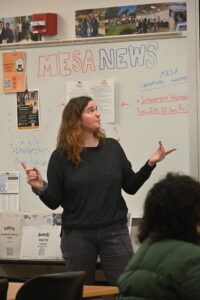
STEM Center Speaker Series: Katharine Murphy Khulusi
As a provider of various resources for students, the Chabot College STEM Center located in Room 3906 brings in experts of different fields that come in to share their expertise…
-
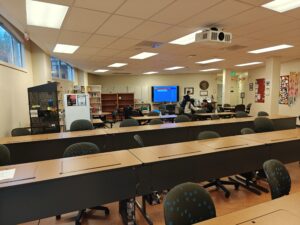
The WRAC Center: WRACking up Skills
Chabot’s WRAC Center is now open for students across Chabot College for students who could use help in reading and writing. The WRAC Center had an open house week from…
-

Silicon Valley Unsung Hero: Roy L Clay Sr.
Roy L Clay Sr. Photographed by: Onyx Truth Silicon Valley is the hub of technological innovation, home to hundreds of companies. Roy L. Clay Sr., also known as The Godfather…
-

Beyond the stars: Mayan Nights at Chabot College Planetarium
On September 21, Chabot College Planetarium hosted an exclusive event that explores the fascinating world of ancient Mayan science and culture. It’s shed light on the Mayan’s advanced understanding of…
-

Banned African American Books in Red States and Why
Books depicting the African American experience from Alex Haley, Alice Walker, Ruby Bridges, and more black authors are banned in the U.S. Schools, Libraries, and prisons from Tennessee to Arizona…
-
Chabot College President Susan Sperling Retiring: A Legacy of Education and Advocacy
After 35 years of dedicated service and unwavering commitment to the Chabot College community, President Susan Sperling has announced her retirement this Spring Semester 2023. Her departure marks the end…
-

Parking at Chabot College
The parking fees at Chabot have attracted attention due to their high taxes and the prices of their fines. Here at Chabot, the parking may seem affordable with a permit…
-

Reusable Containers in the Cafe
As of March 6, Encora, a company specializing in reusable containers, aims to decrease waste and plastic waste at Café Chabot. The implementation of Encora's containers not only promotes environmental…
-

13th Annual Poetry Reading
Chabot College’s 13th Annual Poetry Reading took place on Apr. 27 in building 100 from noon — 2 p.m. The reading was in celebration of National Poetry Month and welcomed…
-
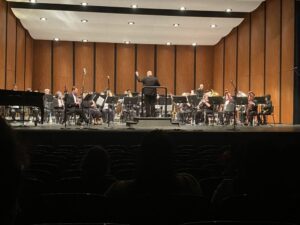
Chabot Wind Symphony Music Festival
On May 3 the Chabot College wind symphony held a music festival conducted by Timothy Harris, Director of Bands and Music Department Coordinator at Chabot College, with clarinetist Duy Tran…
-

Chabot College Offers Free Testing Supplies Following Bookstore Closure
With the closure of the Chabot College bookstore on April 25 and the empty school supply vending machines, students found themselves without an on-campus source for testing supplies such as…
-
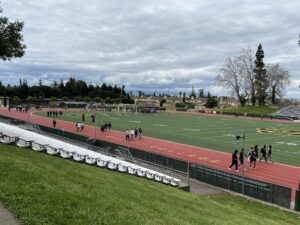
The 3rd annual Suicide Prevention Walk
On May 4, over 300 students attended Chabot College’s third annual Suicide Prevention Campus Walk and Fundraiser as part of Chabot Colleges Mental Health Week. The campus walk was on…
-

Chabot Suicide Awareness Campus Walk
Please come show your support for the Suicide Awareness Campus Walk on May 4 as a part of Chabot College’s Mental Health Week. Check-in is 11:30 a.m. to Noon in…
-

Did You Know That Chabot TV Has an App?
Chabot has an app where students can watch programs produced, written and directed by MCOM students on campus including the news. The app launched March 2023. You can stream the…
-

Chabot College, A Midsummer Night’s Dream
This spring semester, Chabot College performed their version of A Midsummer Night’s Dream, the comedy was originally written by William Shakespeare somewhere between 1594 to 1596. The play, although set…
-

Spring 2023 Chabot Art Gallery
The Chabot College Art Gallery’s opening night was on March 14, and closed on March 31. The gallery featured many different students' works, such as paintings, photography, and sculptures. It…
-

Chabot-Las Positas Community College District Board of Trustees Votes to Suspend COVID-19 Vaccine Mandate.
On Feb. 21, 2023, the Chabot-Las Positas Community College District (CLPCCD) Board of Trustees made the decision to suspend the COVID-19 vaccine mandate effective Apr. 24, 2023. This decision will…
-
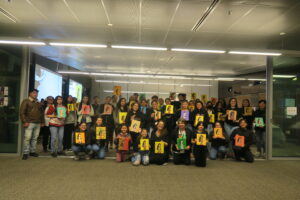
Selena Paint Night at Chabot
Selena Quintanilla was the subject for this year’s paint night at Chabot College in honor of Women's History Month. The event took place on Mar. 23 in hopes of raising…
-

Chabot College Celebrates Black History Month
In honor of Black History Month, clubs geared toward students of color hosted events during February. Most of these events were virtual, like the screening of Black Voices from the…
-

ChatGPT at Chabot
On Feb. 21 many instructors from Chabot College held a zoom meeting discussing ChatGPT—whether it’s beneficial or not to them and their students. ChatGPT is an A.I. (Artificial Intelligence) chatbot…
-

Debt Relief Is a Priority for Students, but Is It for the Supreme Court?
On Feb. 28, in what has become a growing movement across the country, students and teachers amassed on the steps of the Supreme Court to support legislation that would essentially…
-

Cultural Appropriation in Fashion
Cultural appropriation has been in fashion for decades, yet in the past 10 years, cultural appropriation has been brought to the forefront. Fashion is a form of art that is…
-

Stay-in Place New Order Takes Effect for the Bay Area
On March 31 at 11:59 p.m., a new stay-in-place order took effect to reduce the spread of coronavirus (COVID-19). The new stay-at-home order will be extended through May 3, 2020,…
-

Chabot's New Student Senate
Chabot College announced the following newly elected members of the Chabot Student Senate are Ashanti Robinson as President and La'Roy Fitch Jr. as ICC Chairman for the 2019-2020 academic year.…
-

Discrimination Survey
Personal experiences with racial discrimination are common for Black/African-Americans and Doctoral student Leeza Reyburn has shown interest in this area and has designed her own research study on the bias…
-

Regional Training Center Being Built in Hayward
Chabot-Las Positas Community College District teamed up with the city of Hayward to create a world-class facility for firefighters, paramedics, rescue, and emergency response teams. This facility will provide training…
-

Registration Checklist
Chabot students the time has come to start registering for your Spring 2019 semester classes. Here is some information on what you need to stay on track with your educational…
-

School Wi-Fi Updated
As many can agree, a slow internet connection is one of the most frustrating things to ever exist. This is especially true for anyone trying to use the campus Wi-Fi,…
-

The Fight for Education
A considerable portion of California Community College (CCC) districts are estimated to lose millions of dollars if anything resembling Governor Brown’s proposed 2018-2019 budget is adopted. Simulations provided by the…
-

December 16, 2025 American's Drinking Less
-

December 16, 2025 California's Oldest Cathedral And Colton Hall: Monterey's History Hidden In Plain Sight
-
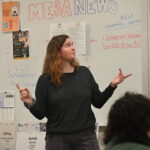
March 24, 2025 STEM Center Speaker Series: Katharine Murphy Khulusi
-

March 10, 2025 The WRAC Center: WRACking up Skills
Art
-

December 8, 2025 Inside Pipeline: A Raw Look at Students and Teachers Fighting Systemic Barriers
-

December 8, 2025 Lift Your Voice: Best In Gospel Competition
Read More
-

December 19, 2025 Modern Game, Modern Manager
-

December 19, 2025 Aspiration frauds Investors of Carbon Credits










